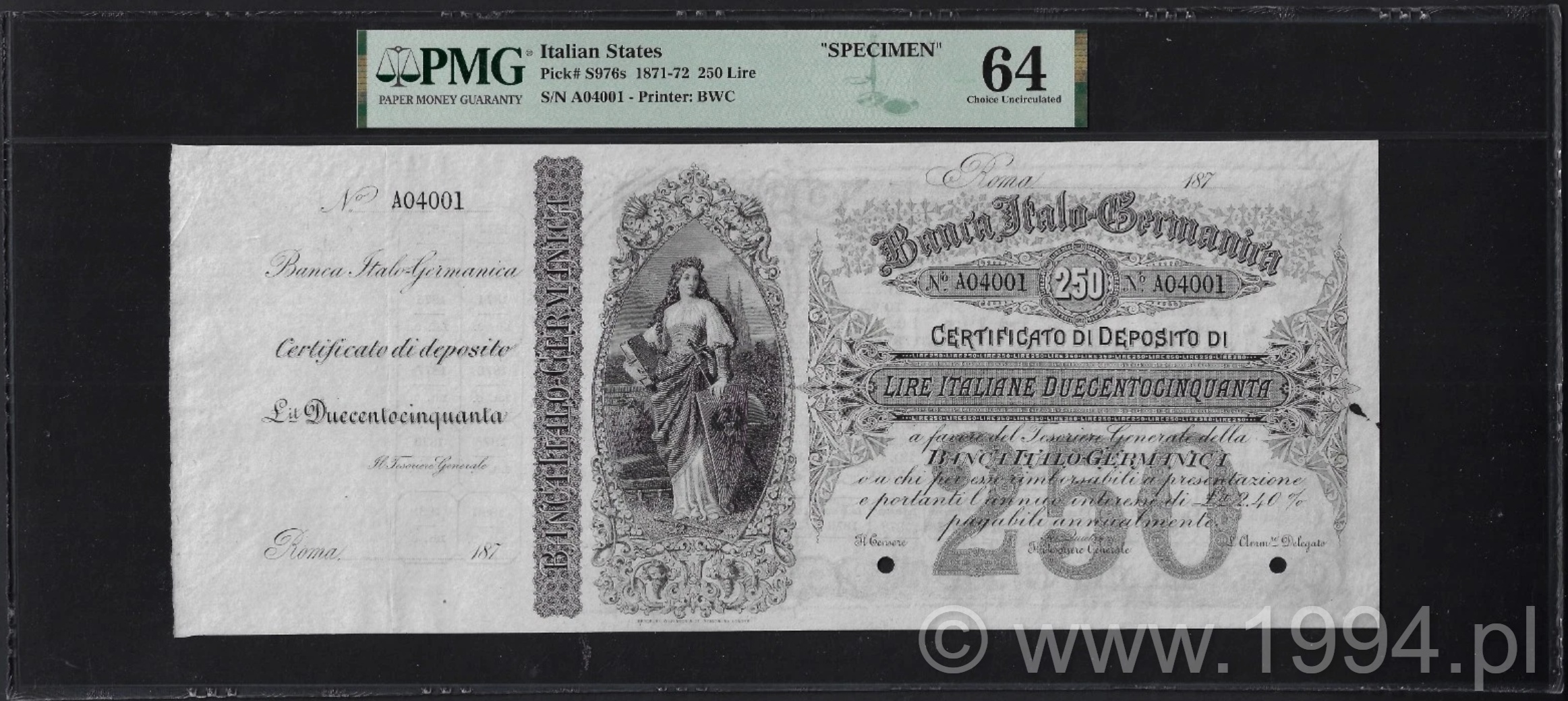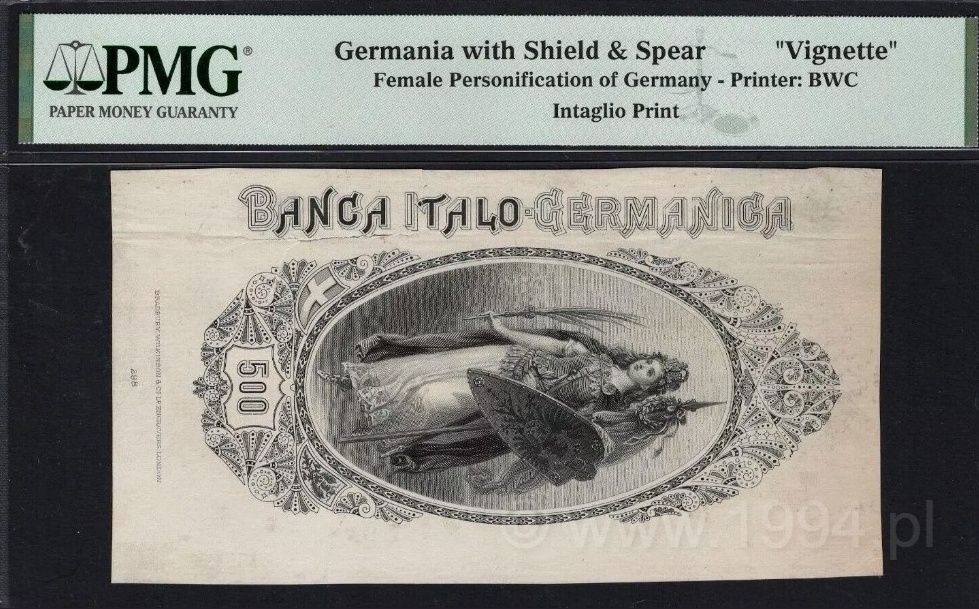
Italy 1871–72 — Banca Italo-Germanica 250 Lire (Specimen)
Oversized specimen of the short-lived Banca Italo-Germanica, engraved in the immediate aftermath of Italian unification. Founded in Rome with German capital, the bank intended to position itself as a bridge between northern European finance and the new Kingdom of Italy. In practice, its note-issuing project never advanced beyond archival and presentation pulls—no issued examples are known. ... Read more →




